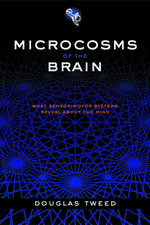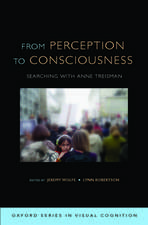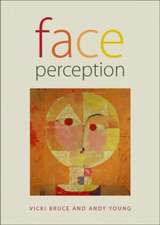Perceiving in Depth, Volume 1: Basic Mechanisms: Oxford Psychology Series
Autor Ian P. Howarden Limba Engleză Hardback – 22 mar 2012
Din seria Oxford Psychology Series
- 30%
 Preț: 787.68 lei
Preț: 787.68 lei - 11%
 Preț: 314.60 lei
Preț: 314.60 lei - 23%
 Preț: 330.78 lei
Preț: 330.78 lei - 34%
 Preț: 1595.08 lei
Preț: 1595.08 lei - 30%
 Preț: 590.97 lei
Preț: 590.97 lei -
 Preț: 356.82 lei
Preț: 356.82 lei - 11%
 Preț: 286.36 lei
Preț: 286.36 lei - 22%
 Preț: 328.28 lei
Preț: 328.28 lei - 22%
 Preț: 485.66 lei
Preț: 485.66 lei - 47%
 Preț: 354.55 lei
Preț: 354.55 lei - 34%
 Preț: 643.07 lei
Preț: 643.07 lei - 31%
 Preț: 448.18 lei
Preț: 448.18 lei - 46%
 Preț: 464.82 lei
Preț: 464.82 lei - 30%
 Preț: 675.99 lei
Preț: 675.99 lei - 33%
 Preț: 497.94 lei
Preț: 497.94 lei -
 Preț: 341.30 lei
Preț: 341.30 lei - 50%
 Preț: 760.43 lei
Preț: 760.43 lei - 22%
 Preț: 354.88 lei
Preț: 354.88 lei - 19%
 Preț: 453.58 lei
Preț: 453.58 lei - 34%
 Preț: 802.03 lei
Preț: 802.03 lei - 27%
 Preț: 351.88 lei
Preț: 351.88 lei - 8%
 Preț: 340.84 lei
Preț: 340.84 lei - 39%
 Preț: 1218.33 lei
Preț: 1218.33 lei - 34%
 Preț: 1167.22 lei
Preț: 1167.22 lei - 34%
 Preț: 609.78 lei
Preț: 609.78 lei - 8%
 Preț: 310.81 lei
Preț: 310.81 lei - 28%
 Preț: 431.42 lei
Preț: 431.42 lei - 34%
 Preț: 1168.02 lei
Preț: 1168.02 lei - 34%
 Preț: 818.86 lei
Preț: 818.86 lei - 50%
 Preț: 520.77 lei
Preț: 520.77 lei -
 Preț: 127.27 lei
Preț: 127.27 lei -
 Preț: 282.75 lei
Preț: 282.75 lei - 24%
 Preț: 386.49 lei
Preț: 386.49 lei - 34%
 Preț: 1434.66 lei
Preț: 1434.66 lei - 27%
 Preț: 502.06 lei
Preț: 502.06 lei - 28%
 Preț: 605.94 lei
Preț: 605.94 lei - 23%
 Preț: 523.62 lei
Preț: 523.62 lei - 34%
 Preț: 762.60 lei
Preț: 762.60 lei - 28%
 Preț: 488.97 lei
Preț: 488.97 lei - 22%
 Preț: 422.01 lei
Preț: 422.01 lei - 31%
 Preț: 397.59 lei
Preț: 397.59 lei - 34%
 Preț: 599.38 lei
Preț: 599.38 lei - 16%
 Preț: 341.24 lei
Preț: 341.24 lei
Preț: 1859.05 lei
Preț vechi: 2670.17 lei
-30% Nou
Puncte Express: 2789
Preț estimativ în valută:
355.72€ • 371.40$ • 294.41£
355.72€ • 371.40$ • 294.41£
Carte tipărită la comandă
Livrare economică 24-31 martie
Preluare comenzi: 021 569.72.76
Specificații
ISBN-13: 9780199764143
ISBN-10: 019976414X
Pagini: 672
Ilustrații: 150 colour, 150 HT, 150 b/w, 150 HT
Dimensiuni: 282 x 224 x 41 mm
Greutate: 2.36 kg
Editura: Oxford University Press
Colecția OUP USA
Seria Oxford Psychology Series
Locul publicării:New York, United States
ISBN-10: 019976414X
Pagini: 672
Ilustrații: 150 colour, 150 HT, 150 b/w, 150 HT
Dimensiuni: 282 x 224 x 41 mm
Greutate: 2.36 kg
Editura: Oxford University Press
Colecția OUP USA
Seria Oxford Psychology Series
Locul publicării:New York, United States
Notă biografică
Ian P. Howard is Professor at the Centre for Vision Research at York University in Toronto. He is the co-author of several books including Human Spatial Organization, Human Visual Organization, and with Brian J. Rogers, of Binocular Vision and Stereopsis (Oxford University Press, 1995), as well as Seeing in Depth, (Porteous and Oxford University Press, 2005). Brain J. Rogers is Professor of Experimental Psychology at Oxford University. He is the author, with Ian P. Howard, of Binocular Vision and Stereopsis, OUP, 1995 and Seeing in Depth, I Porteous and OUP, 2005.












